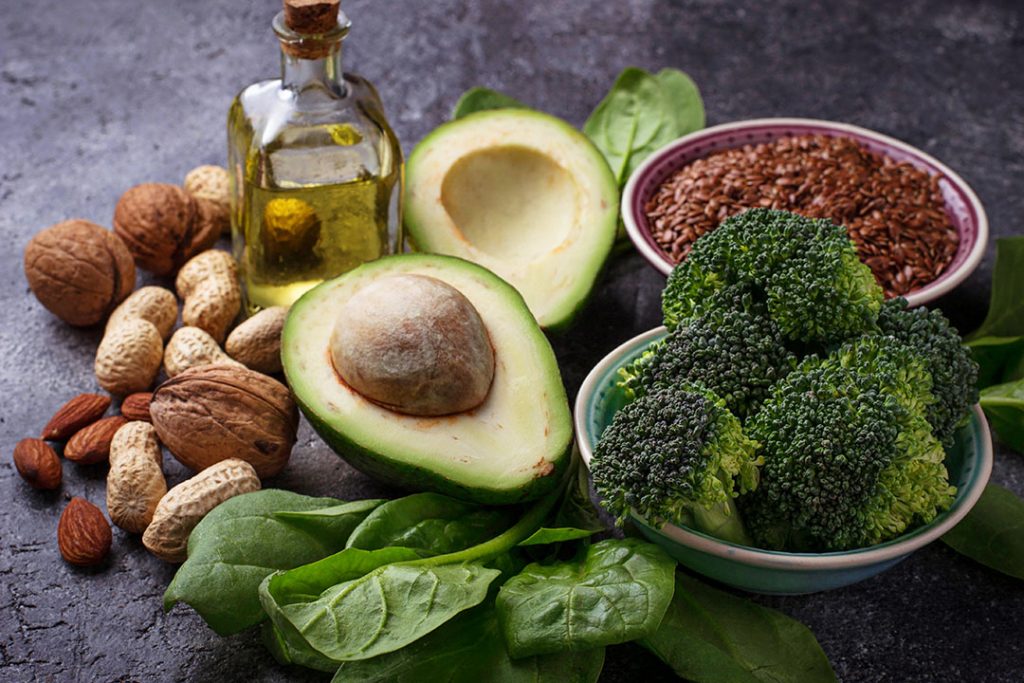Plant Based Keto??
Hold on, did you just say plant based keto? How does that work? I mean, don’t you have to eat a ton of meat on keto? And don’t plant based diets rely heavily on lots of starchy carbs?
Well, those are the general misconceptions, yes. But the truth of the matter is that the plant based and keto diets are a match made in heaven. I’ll explain.
Full disclosure before we begin, I’m not a vegetarian, nor a vegan, my daily diet normally contains meat. However, I believe that there are great benefits to be had for meat eaters by switching to a plant based diet every now and again, just to give your system a break. And if you follow a keto diet anyway, who knows, you might even enjoy it!
Let’s start by addressing some of the main issues plant based dieters face. One of the first questions that usually comes up is; where does the protein come from?
Ordinarily for vegetarians it’s pretty simple; you combine certain amino acid profiles from various food sources to create complete proteins. But on keto that can become tricky, because you can no longer combine the starches and carbohydrates you’d normally use to make up those complete proteins. But it can be done, as we’ll cover further down. A slightly more difficult complication I’d like to cover beforehand though, is fat source.
The Fat Problem
This may not seem as obvious a problem; however, I’d argue that this is actually a more complex and tricky issue than our protein dilemma!
One of the biggest problems plant based dieters face is the fact that, due to so many grains, starches and carbs in their diet, their Omega-6 profiles are very high. And the only Omega 3’s they do consume come in the form of Alpha Lino-lenic Acid, or ALA. But why is this problem?
Well, the problem is that the body really struggles to break ALA down into its usable forms of EPA and DHA. EPA’s general purpose is to support the heart, immune system and regulate inflammatory response within the body, while DHA supports the health of the brain, eyes and central nervous system. ALA is an Omega 3 found in plants, which we usually get from flax and chia. Very popular seeds in most plant based diets. And while you may think that you are consuming your Omega 3 requirements with plenty of Flax and Chia in your diet. That unfortunately may not be the case.
You see, there is only around a 1-2% conversion rate of the ALA contained in these seeds into useable Omega 3. And it gets worse; studies have shown that Omega 6 actually further impairs the body’s ability to process Omega 3. So this leaves most plant based dieters with a very tricky problem. In an ideal world, we could just increase our intake of Flax and Chia seeds and be good. But we now know that the high levels of Omega 6 in the general plant based diet is further stunting Omega 3 uptake.
The only way to combat this problem, and balance the Omega 3 to Omega 6 ratio in the body is to considerably reduce our intake of Omega 6. This is where keto comes in. You see, naturally, the ketogenic diet doesn’t allow for all the grains and starchy carbohydrates that are the cause of the high Omega 6 profile.
It’s crucial that while following a keto diet that you do not consume oils such as canola oil, sunflower oil, sesame oil etc. Really anything that is high in Omega 6. Instead you should try and focus on the more Omega neutral oils such as avocado oil, coconut oil, macadamia nut oils etc.
Doing this will allow you to consume your healthy dietary fats, while balancing your omega 6 to omega 3 ratio, and given that you are not consuming sugars, starches and carbs, your body’s conversion process of the Omega 3’s which you are consuming (in flax, chia etc.) will be much more efficient and powerful.
Basically what we are doing with keto is focusing more on the healthy fats and eliminating the starchy carbs so that everything falls into alignment. Hey presto, problem solved!
The Protein Problem
Okay, so what about the protein then? I guess this is most people’s primary concern when considering a plant based diet. But the biggest misconception here is a drastic overestimation of the amount of protein required when following a keto diet. Here’s why.
When in ketosis, the blood stream contains a compound called beta hydroxybutyrate, or BHB. Which means the body is using ketones, or fat, for energy. A study from The Journal of Clinical Investigation found that test subjects with BHB in their blood stream had between 18-41% less leucine oxidation than those who did not. Okay, so what does this mean? Well, as we know, proteins are essentially made up of amino acids, and leucine is the primary amino acid associated with catabolism/muscle breakdown. So given that those test subjects that were following a ketogenic diet saw 18-41% less leucine oxidation, they didn’t burn up nearly as much muscle. Simultaneously, those same test subjects saw a 5-17% increase in leucine synthesis, meaning that whatever protein they were consuming had a higher rate of synthesis in the muscle. So not only were they not breaking down as much muscle, they had more amino acids available for use.
This is pretty amazing stuff; it turns out we don’t need nearly as much protein as we might’ve thought, when on a keto diet. But we still do need protein. So given that we can no longer combine some of the carbs/starches we normally would, what are our options?
Well, I think a great source of protein for the plant based dieter is Pea Protein. It usually comes in a powder form, much like other proteins such as whey. In fact, a study in the Journal of The International Society of Sports Nutrition found that both pea protein and whey protein ended up having exactly the same effect on muscle density and muscle strength.
By combining pea protein with healthy fats, not only are you getting a great amino acid profile, but you are fuelling up with a great neutral fat source like we talked about earlier. So it’s a win win all round!
Other Useful Tips
I would urge that you avoid Soy. Or at least only consume it in small amounts, on occasion. Soy contains phytoestrogens, which are structurally similar to estrogen, and behave in much the same way in the body. Interacting and reacting with the bodies estrogen receptors, this can be especially harmful for men.
Other great fat/protein sources are nuts such as brazil nuts, macadamia nuts, and walnuts. Pumpkin seeds are fantastic, as are sunflower seeds. Take the sunflower seeds in smaller amounts though, as they are slightly higher in their omega 6 profile.
So now we know what we are looking for in a Plant Based Keto diet, what might that look like on our plates throughout the day? Well, here are some great recipes to get you started

